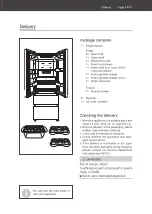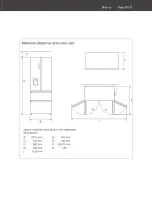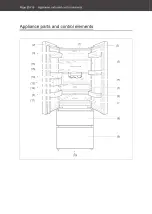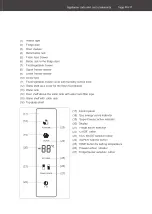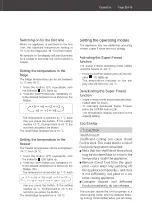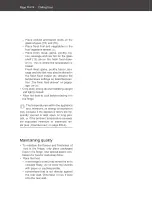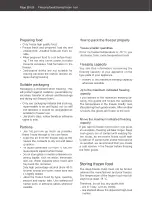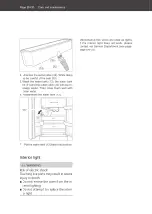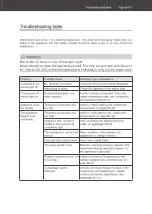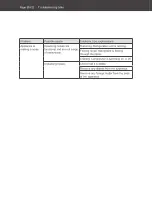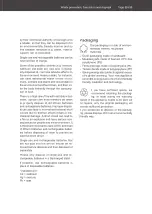
Freezing food/Storing frozen food
Page EN-25
WARNING
Danger of explosion!
Improper handling of the appliance
may lead to an explosion.
■
Do not store explosive substances
such as aerosol cans with a fl amma-
ble propellant in this appliance, as
they can form ignitable gas-air mix-
tures.
CAUTION
Health hazard!
Incorrect handling, insuffi cient cool-
ing or overlapping items can spoil the
stored food. This could lead to a risk of
food poisoning when consumed.
■
In particular, pack raw meat and fi sh
carefully to ensure that adjacent
food cannot be contaminated by sal-
monella or similar bacteria.
■
Abide by the storage times recom-
mended by food manufacturers.
■
Note that the shelf life of the frozen
food may be shortened due to a rise
in the temperature inside the appli-
ance (from defrosting, cleaning or
power failure).
■
If there is a power failure, the frozen
food may remain suffi ciently cold for
some time. In case of prolonged pow-
er failure or malfunction of the appli-
ance, remove the stored frozen food
from the appliance and store it in a
suffi ciently cool place or in anoth-
er cooling appliance. The maximum
storage time in the event of a fault is
shown on the appliance’s type plate.
■
After a malfunction, check whether
the stored food is still edible. Consume
thawed and defrosted foods immedi-
ately, do not refreeze.
Risk of injury!
Improper handling of the appliance
may result in injury. Risk of burns caused
by low temperatures.
■
The food and the inside walls of the
freezer have a very low temperature.
Never touch them with wet hands.
This can cause injury to the skin. Skin
damage can occur even with dry skin.
■
Let ice cubes or ice lollies thaw a lit-
tle before eating, do not put into your
mouth straight from the freezer.
• Follow the instructions in this chapter to
store your food for the longest possible
time in the best possible way.
Freezing food
Freezing means reducing the core tempera-
ture of fresh, room-temperature food to fro-
zen as quickly as possible – for best results
‘flash-frozen’. If not cooled quickly enough,
the food will be “killed by frost”, i.e. the struc-
ture will be destroyed. A constant storage
temperature of -18 °C is needed to maintain
the food’s consistency, taste and nutritional
value.
Freezing food has a positive effect on its shelf
life. This will also help you avoid food waste.
• Set the temperature in the freezer to –18 °C
and fill it in such a way that the tempera-
ture conditions inside are optimally utilised,
guaranteeing optimal food storage:
– Place food to be frozen in the draw-
ers (8) or (9) inside the freezer.
• Combine the drawers as shown in the di-
agram on pagepage EN-23 to achieve the
most efficient use of energy for your ap-
pliance.
Freezing food/Storing frozen food

